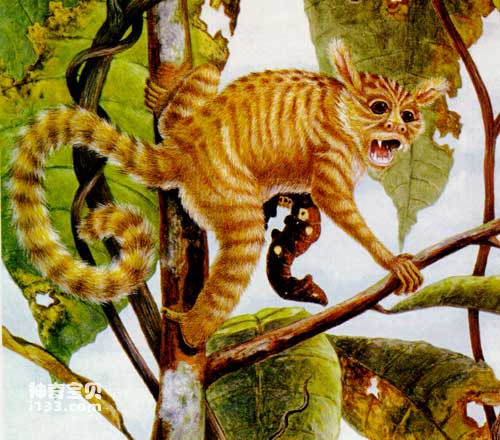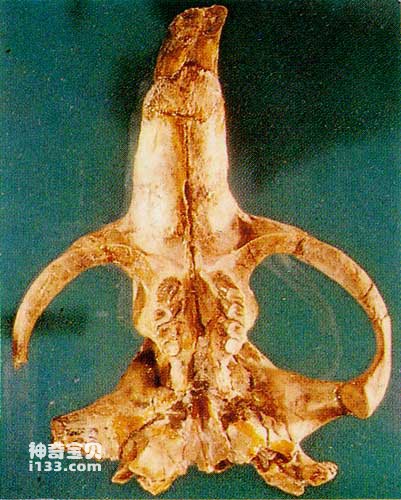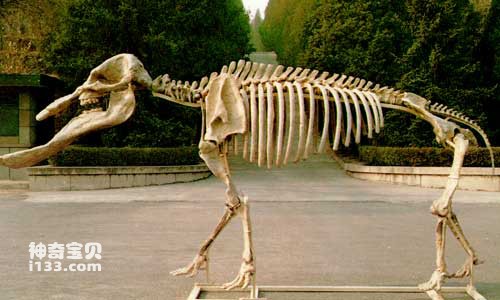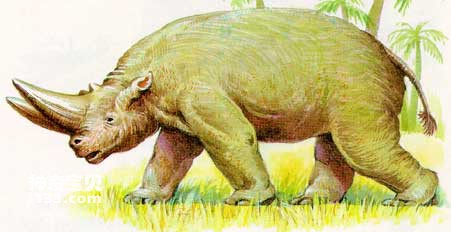During the period starting from the Eocene and continuing to the Oligocene, the ancestors of modern mammals stood out from certain species in the ancient mammal group, and based on this, the first evolution of mammals after entering the Cenozoic took place. Secondary adaptive radiation. As a result of the second explosion, these advanced mammal groups completely replaced the ancient mammal groups. These progressive mammal groups include:

Aurothema sinensis—the oldest higher primate
A modern type in the class (order) of anatomy. Including the giant glyptodonts and ground sloths that were widely distributed in North and South America during the Pleistocene, the sloths and anteaters that still live in the American tropics today, and the armadillos that have a wide distribution area in the Americas.
Higher primates in the order Primates.

Chamouse - fossil of an ancient rodent
Rodents (order).
Lagomorphs: Although primitive rabbits have appeared in Mongolia as early as the Paleocene Epoch, the real prosperity of this group began in the Oligocene and continued until modern times.
Cetaceans (Order): Mammals that differentiated from the mesotherians in the early Eocene Epoch, returned to the ocean, played an ecological role similar to the ichthyosaurs of the Mesozoic Era, and have successfully reproduced until modern times. Including various cetaceans and various dolphins as well as freshwater finless porpoises (such as white-tip dolphins). Because the buoyancy of water in the ocean weakens the influence of the earth's gravity, coupled with good adaptability, many whales have developed into behemoths; the modern blue whale can be 300 meters long and weighs 150 tons, making it the largest ever on earth. biology.

Shovel-toothed elephant--the lower teeth look like a big shovel
ancient proboscis
Carnivorous (head).
Tubulodonts (order): evolved from the ancient anklets, termite-eating animals that looked like pigs and appeared in the late Miocene. They have survived in Africa to this day and are called native pigs.
Proboscis (order): Starting from the ancestor elephant in the Fayoum fauna of Egypt, the body shape has continued to increase, the nose has continued to become longer and differentiated, and the incisors have also differentiated and lengthened in various ways.

Heavy foot
Baryopods (order): Found in the Oligocene strata of Egypt, they are hoofed animals similar in size and appearance to modern rhinos. They have bulky bones and limbs and feet similar to Elephants-Are-Endangered.html">elephants. There is a pair of huge and juxtaposed bony angle. It may have been an early evolutionary experimenter starting from an ancestor shared with proboscis, leaving no descendants after the Oligocene.
Hyrax (Order): Appeared in the Fayoum fauna of Egypt during the Oligocene Epoch, and then underwent radiative evolution. Some Oligocene species such as the Hyrax once developed to the size of a pig. Later, the large hyraxes became extinct, and some small species continue to exist in Africa and the Middle East today, becoming herbivores that look like rabbits but have hooves on their feet. They may share a common ancestor with the ancestral elephant.
Sirenia (order): A group of hoofed, herbivorous aquatic mammals that may have a common origin with the Archeopteryx, but differentiated in the late Eocene and continues to this day. Modern types include Manatees-Are-Endangered.html">manatees, which inhabit the coasts of Africa and America on both sides of the Atlantic Ocean, and dugongs, which inhabit the coasts of the Pacific and Indian Oceans.
Throdonts (order): Another branch of the aquatic ungulates that shared the same ancestor as the proboscideans. It was distributed along both sides of the Pacific during the Miocene. It was probably an intermediate type between Manatees-Are-Endangered.html">manatees and early proboscis.
Perissodactyla (order).
Artiodactyls (order).
animal tags: Bryopods primates lagomorphs cetaceans carnivores
We created this article in conjunction with AI technology, then made sure it was fact-checked and edited by a Animals Top editor.